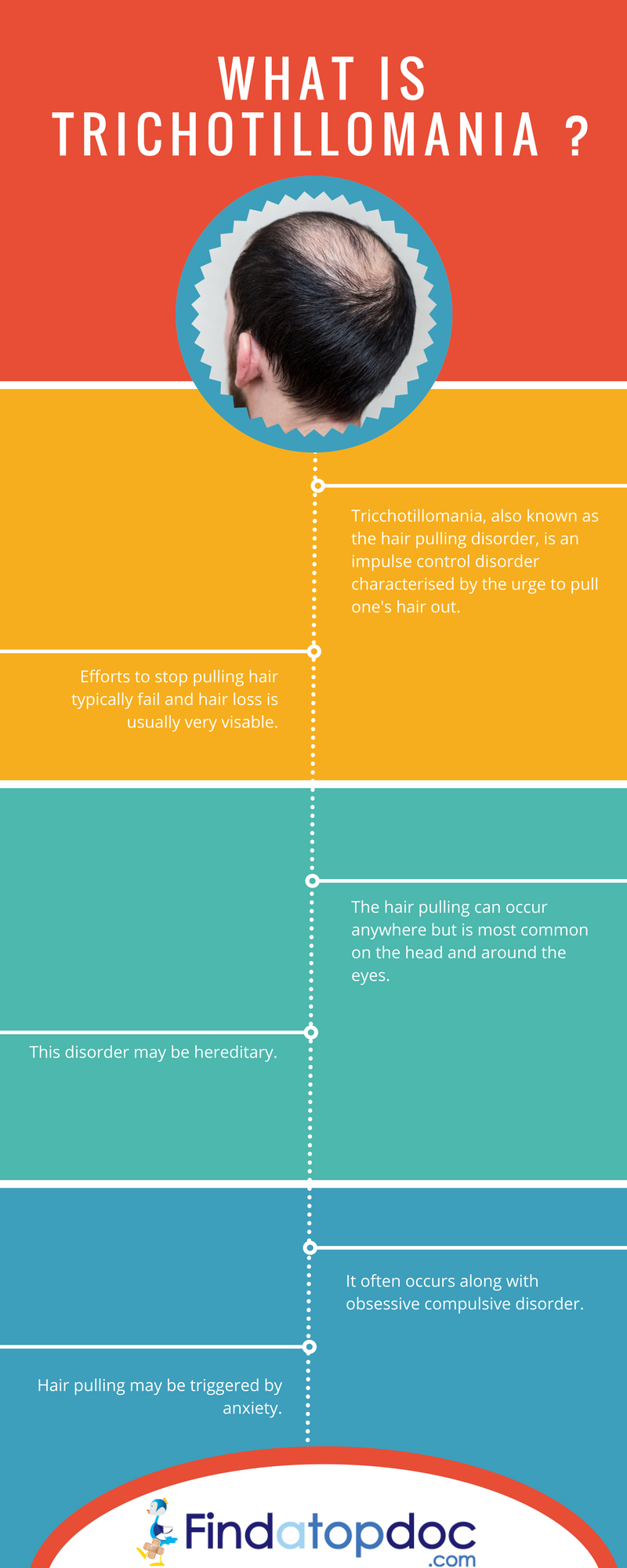
Source
Risk Factors
Below are certain risk factors, which can increase the risk of developing this mental disorder:
- Age: Trichotillomania is known to develop in an individual just before the onset of puberty or during the early teenage years between the age of 10-13 years old, which often becomes a lifelong or chronic issue. Infants are also prone to developing the habit of hair pulling. However, it is usually mild and would go away on its own without the need for treatment.
- Family History: Genes have a significant role in most complex disorders. Similarly, genetics also play a role in the development of trichotillomania. Thus, trichotillomania may happen in people who have close relatives suffering from the disorder.
- Stress: People dealing with stressful life events or situations may trigger the disorder. Stress can be physical, emotional, or mental.
- Other Disorders: Individuals who suffer from trichotillomania may also have other forms of mental disorders, which include anxiety, depression, and obsessive-compulsive disorder.
There are certain treatment methods that can help individuals with trichotillomania. They include:
- Cognitive Therapy: In this therapy, any kind of distorted belief, which may have a connection when it comes to pulling hair is identified and examined.
- Habit Reversal Training: This type of behavioral therapy is considered as the main treatment for trichotillomania. This therapy would help an individual recognize the urges or triggers of hair pulling, and learn how to substitute such feelings with other behaviors instead. One example would be clenching one's fists to stop the urge of hair pulling or simply redirecting their hands to their ears instead of going for their hair. Other types of therapies can be used in combination with habit reversal training.
- Acceptance and Commitment Therapy (ACT): In this particular therapy, individuals learn to accept their hair-pulling urge without acting too much on it.